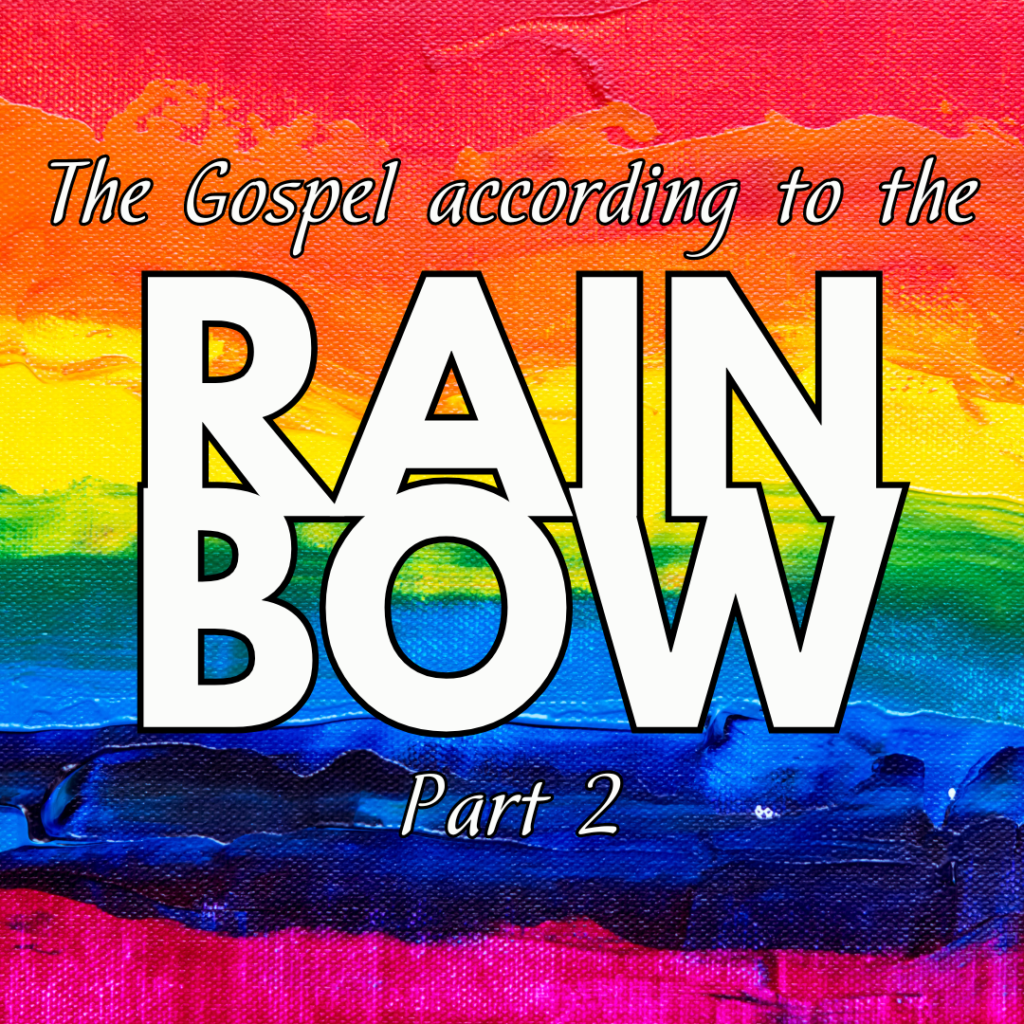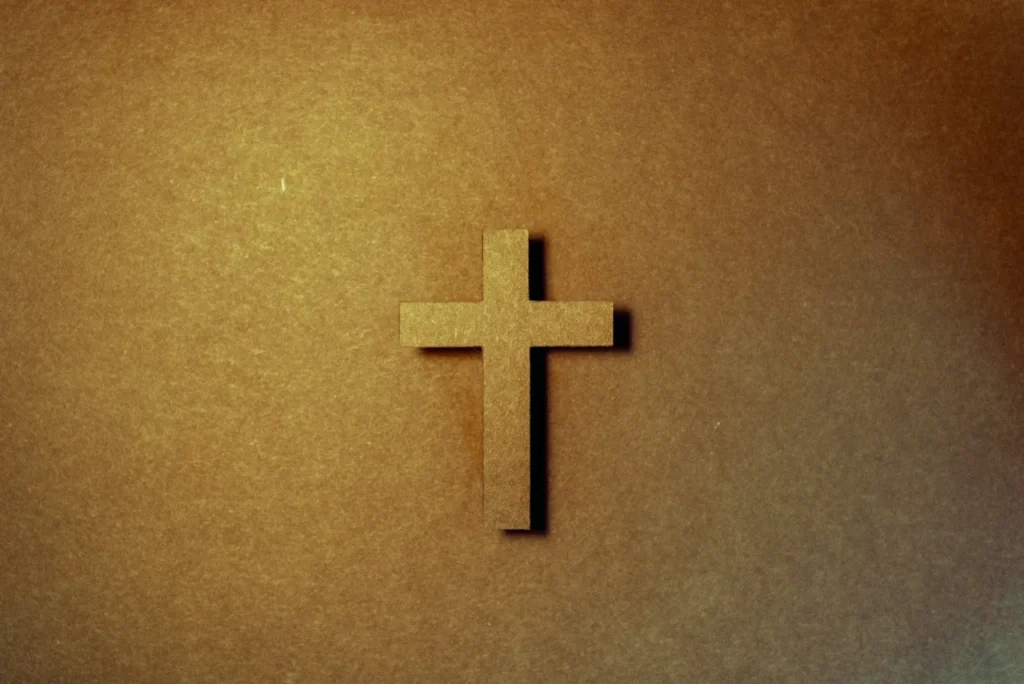In the previous article, we analyzed the context in which God placed the symbol of the rainbow to understand that God is a just judge who punishes sin and does not turn a blind eye, but also a merciful God who chooses to forgive. Today, we will look at two more wonderful realities that we learn from the rainbow: one is the reason we can enjoy divine mercy, and the other is the consequence.

3. Redemption is Accomplished
The sign for the covenant that God made with the cosmos, with Noah as the intermediary, was a bow. The Hebrew word used is the one you would expect to refer to a war bow. In the iconography of the Ancient Near East, the image of a god wielding a bow was very recurrent and certainly fearsome. A god wielding a bow is indeed lethal.
Well, the Bible makes it clear that the Lord “is a warrior; the Lord is His name” (Ex. 15:3). Of Him, it is said: “Your bow was made bare, the rods of chastisement were sworn” (Hab. 3:9). So, this warrior God who wielded a bow to destroy His enemies, placed His bow in the sky.
The symbolism is that of a warrior who, after returning from battle, hangs up his weapon to not use it again, inaugurating a time of peace. The bow has ceased to function as a battle weapon and has become a sign of a covenant of peace, prosperity, and stability. It is the ultimate symbol that the war is over.
The ultimate warrior God hangs His bow in the sky, a bow with which He was capable of destroying the entire world. He does this, not because His power has diminished, nor because the current inhabitants of the world no longer deserve it, but because He has decided to have grace with those He has chosen to survive.
Moreover, and this is the most curious part, He has hung the bow in such a way that it is now pointing upwards. If He were to place an arrow in that bow now hanging from the clouds, that arrow would point to heaven, not to earth. Now the destruction will not come down but will go up. The destructive bow of the warrior God has changed its target. The punishment for sin now points to the Holy One, instead of seeking to be satisfied with the blood of the wicked.
This bow pointing toward the sky speaks of the very reason why the covenant of which it is a sign can even stand. If God can have peace with man and hang up the bow, it is because He has aimed it upward. The payment for our wickedness was satisfied by the incarnate God, dying on a cross in our place. The God who descended from heaven was struck by the divine bow, bearing the price of the world’s wickedness.
Paul said that “having been justified by faith, we have peace with God through our Lord Jesus Christ, through whom also we have obtained our introduction by faith into this grace in which we stand; and we exult in hope of the glory of God” (Rom. 5:1-2).
God can be so good as to make a covenant of peace with sinners, despite their wickedness, because He Himself purposed to satisfy in His precious Son the wrath we deserved and paid for our redemption forever. The rainbow is a precious reminder of the great price God paid so that we could have peace with the Holy One.
4. God Counts on You
There are other mentions of a rainbow outside the book of Genesis. The prophet Ezekiel was part of the Jewish community suffering exile in Babylon under the impious rule of Nebuchadnezzar. When God’s people were suffering the just and more than deserved punishment for their rebellion, the Lord called this prophet, and He did so through a vision of divine glory.
“And above the expanse that was over their heads there was something resembling a throne, like lapis lazuli in appearance; and on that which resembled a throne, high up, was a figure with the appearance of a man. Then I noticed from the appearance of His loins and upward something like glowing metal that looked like fire all around within it, and from the appearance of His loins and downward I saw something like fire, and there was a radiance around Him. As the appearance of the rainbow in the clouds on a rainy day, so was the appearance of the surrounding radiance. Such was the appearance of the likeness of the glory of the Lord. And when I saw it, I fell on my face and heard a voice speaking.” (Ezekiel 1:26-28, NASB)
The greatness that the prophet beheld before this divine appearance was described as best as he could, but surely his narration falls very short of what he really saw. As part of this spectacular vision, the Lord had a rainbow surrounding Him. Apart from the much we could say about the various parts described, let’s focus on what the rainbow might have meant for the awestruck Ezekiel.
This is the symbol that God is near and keeps His covenants. Despite the Jews being an unfaithful people and suffering the consequences of it, God does not forget the covenants He has made with them, and that was well symbolized with that rainbow. The Lord remains faithful, even though His people are not. He is good and will continue to have grace with His own, not because they deserve it, but because He has committed to it.
This is the same thing we see in Revelation 4:3, where John describes the glory of God’s throne in terms very similar to Ezekiel, including the rainbow around the Lord. Again, it conveys the firmness of God’s covenants. We sometimes falter, but God does not. He is faithful and always will be.
So, the prophet Ezekiel, before the revealed glory of the faithful God, can only fall prostrate and worship, to listen to what the Sovereign has to say to him. And that is, perhaps, the most spectacular part: God calls Ezekiel for His service, which is what happens starting in chapter 2 of Ezekiel.
The magnificent and powerful Lord, in a way that we do not fully understand, counts on us to be His spokespersons, to carry His news to the world. The same One who should have consumed us for our wickedness has rescued us by paying for our evil and now sends us to deliver His Gospel. How wonderful!
We see the same in Revelation 10. There, we behold a mighty angel descending “from heaven, clothed with a cloud; and the rainbow was upon his head…” (Rev. 10:1) with a message for the world: “… there will be delay no longer” (Rev. 10:6). That is, the angel brings an urgent message: “Time is up, folks!” It is necessary to come to Christ today; tomorrow will be too late. This is the message we must deliver on behalf of this warrior, kind, and faithful God.
The rainbow has seven colors, but the pride flag has only six. There are different reasons for this, especially the cost of the fabric of some colors. But this reality is very significant. Seven, in the Ancient Near East, symbolized divine perfection.1 Six, however, symbolized wickedness, the one that does not reach perfection, just as six does not reach seven. Thus, the situation is very graphic. The rainbow of our Lord is perfect, the sum of colors that give pure white, and its symbolism is a beautiful picture of the great Salvation we have in Christ. The spurious rainbow of the gay flag does not reach perfection, it is wicked, and its sum does not give white; it could never do so because it has nothing to do with what God has designed. Do not be deceived by propaganda; the rainbow is a wonderful symbol that speaks of a judging, merciful, redeeming God who counts on you to save this world that celebrates sin and death.
- That is why there are seven spirits and seven churches, seven lampstands and seven stars in John’s vision in Revelation 1-3. “Seven was the most sacred number for the Hebrews… and symbolized divine plenitude.” Ray Summers, Worthy is the Lamb: Interpretation of the Book of Revelation in Its Historical Background (Nashville, TN, B&H Publishing Group, 1951), 23. ↩︎


